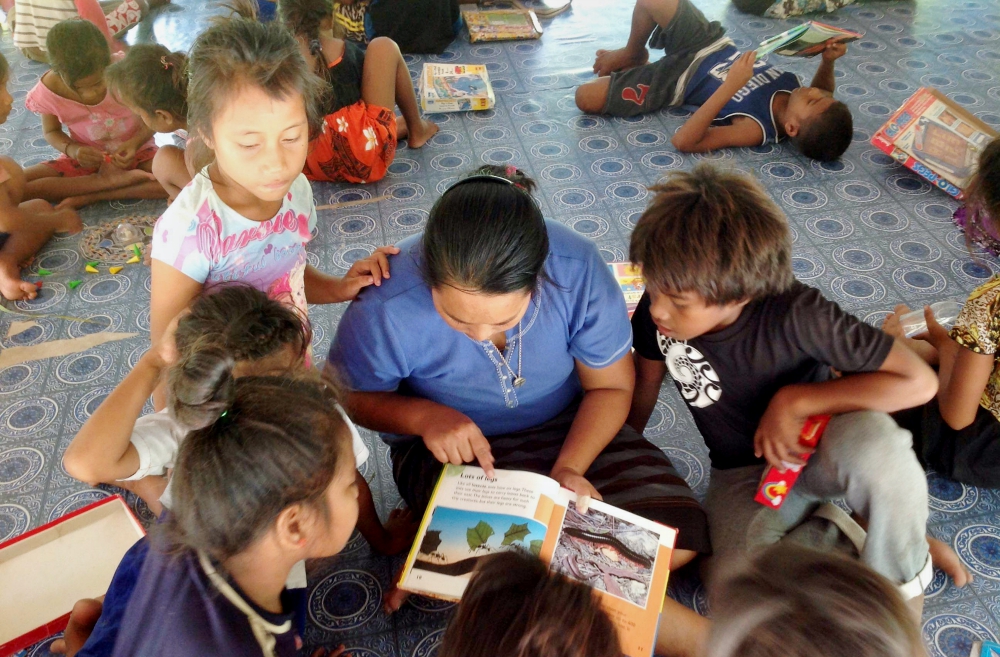It's easy to feel overwhelmed by statistics and speculation about climate change. Scientists and politicians debate its causes and impacts, what might be done or whether it's too late. Students can feel left out or powerless, even though they're eager to be part of the solution.
In many parts of the world, however, the future is now. Ice sheets are melting, extreme weather patterns are becoming common, and coastal communities are seeing the wet reality of rising sea levels. And sisters are helping those hurting most from this global challenge.
There are blessings and opportunities to be found in these challenging times. Technology has helped raise awareness about climate change, as have the committed efforts of sisters around the world. They share stories of real people. Connecting faces and names to hard data personalizes the issue and leads to more effective advocacy
Mark off your classroom or gathering space with lines (using masking tape, chalk or yarn) every two or three feet. Number each section progressively, from 1 to 8. Students can either sit where they normally would or in a circle or other arrangement that stretches them across different numbered sections.
Explain that scientists commonly accept that many factors, primarily the melting of glaciers and ice sheets, is causing a rapid increase in sea levels. The National Oceanic and Atmospheric Administration estimates that sea levels will rise between 8 inches (.2 meter) and 6.6 feet (2 meters) by 2100, while other experts project more dire rises.
Say: "Our room has been divided into seven parts representing 1- to 8-foot elevations above current sea level. Imagine that you live in a coastal city or village that is beginning to experience rising sea levels. I will time this activity. I will announce one-foot increases in the sea level, give you 10 seconds to respond and then stop briefly to discuss the situation and how you're responding to it."
(Be sure to establish rules, such as no climbing on furniture, no climbing on other people, or other precautions you think are necessary or appropriate. Use the brief discussion times to ensure that students are safe and behaving appropriately. Keep things moving rapidly.)
After going through seven time intervals, lead a longer discussion, preferably with students remaining in place where they wound up at the end of the activity. Ask:
- What was your first concern or priority as we began?
- What was your first instinct or reaction?
- Did you regret moving from where you began, or did it just make sense to go somewhere else?
- How did you feel as people moved into your space?
- Was anything important left behind?
- Is there enough room for everyone to remain safe and dry?
- How does everyone feel about where they wound up?
Explain that the land levels in this exercise were unrealistically steep, just as the time sequence was ridiculously fast. More importantly, because of that, the thinking students could do was pretty simplistic. Ask students:
- What are five things that people in your situation might do if they had one or two generations to respond?
- What are five impacts that their migration might have on the land to which they shift?
Conclude by explaining that people already are wrestling with these decisions and tensions, and untold millions more will do so in their lifetimes.
God of all creation, bless us with a sense of urgency and empathy
as we consider our brothers and sisters who live along our world's coasts.
Grace us with the wisdom to think together, to plan creatively, and to open our hearts and homelands to those who must migrate.
May we not raise our hands in fury, frustration or finger-pointing, but join them in collaboration for the good of your people and all the earth.
Amen.
Please give us your feedback! Fill out a quick survey about this lesson and how we can serve you better. Remember that its title is "Sisters help islanders face rising seas"
Tell us what you think about this resource, or give us ideas for other resources you'd like to see, by contacting us at [email protected]
